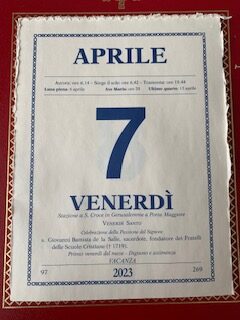 It’s Good Friday. The sun rose at 6:42 and will set at 19:44. The Ave Maria is at 20:00. The Roman Station is, of course, at Santa Croce in Gerusalemme. It is the Feast of St. John Baptist de la Salle.
It’s Good Friday. The sun rose at 6:42 and will set at 19:44. The Ave Maria is at 20:00. The Roman Station is, of course, at Santa Croce in Gerusalemme. It is the Feast of St. John Baptist de la Salle.
It is a 1st Friday.
Today, being Good Friday, is a day of both fasting and abstinence.
A couple of the sights from yesterday.
This one is especially for a friend of mine, who introduced me to the fascinating and deeply amusing autobiography: A Papal Chamberlain: the Personal Chronicle of Francis Augustus McNutt
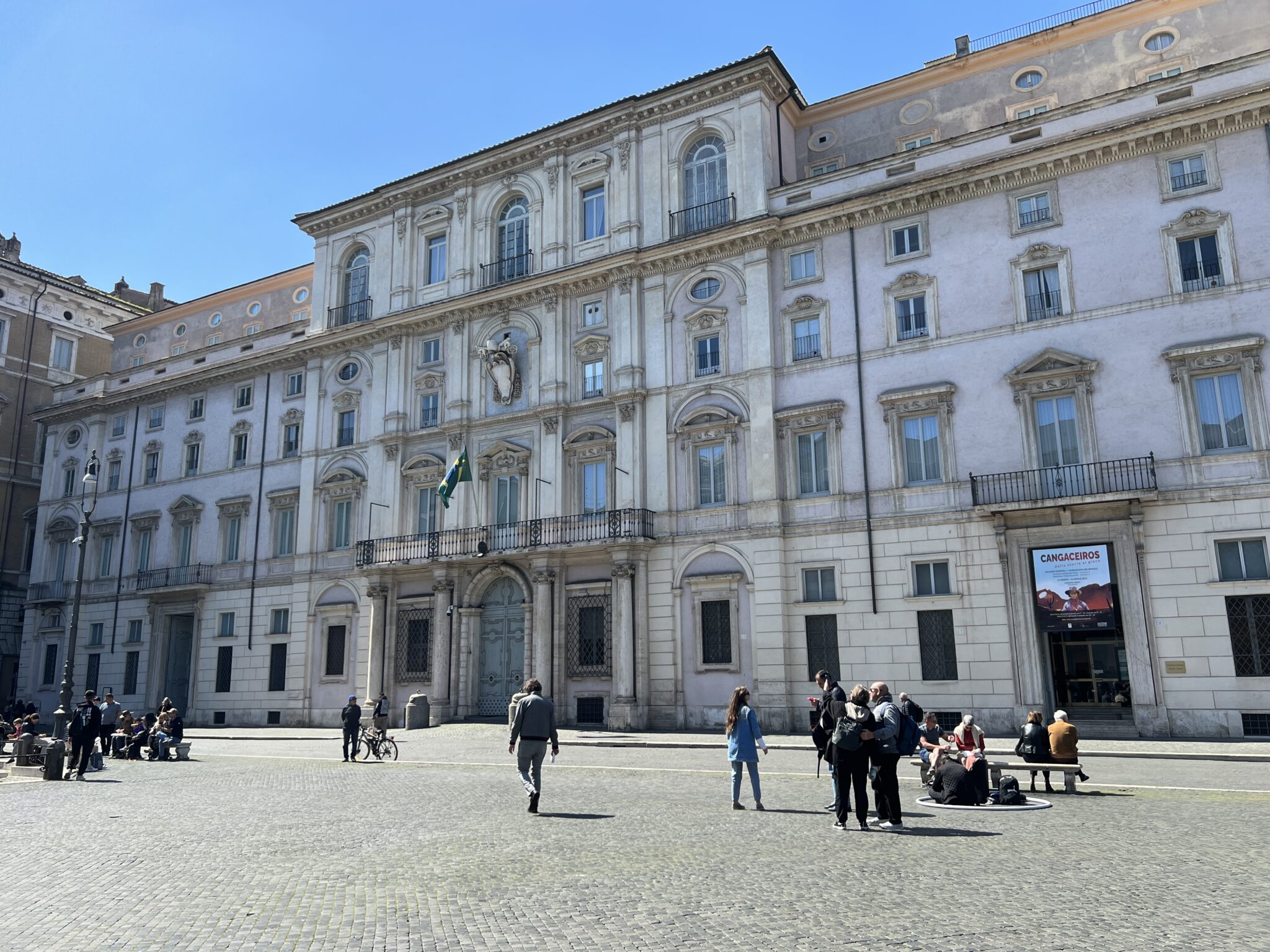
I often show photos of food that is pretty good. Here’s a shot of something that was simply dreadful. It was an embarrassment for an other reliable place and I am amazed that a cook allowed this to leave the kitchen. This is supposed to be rigatoni all’amaticiana. Because this was so awful, I’ll speak the name of the restaurant: Maccheroni on the Via della Coppelle. There was no excuse for this.
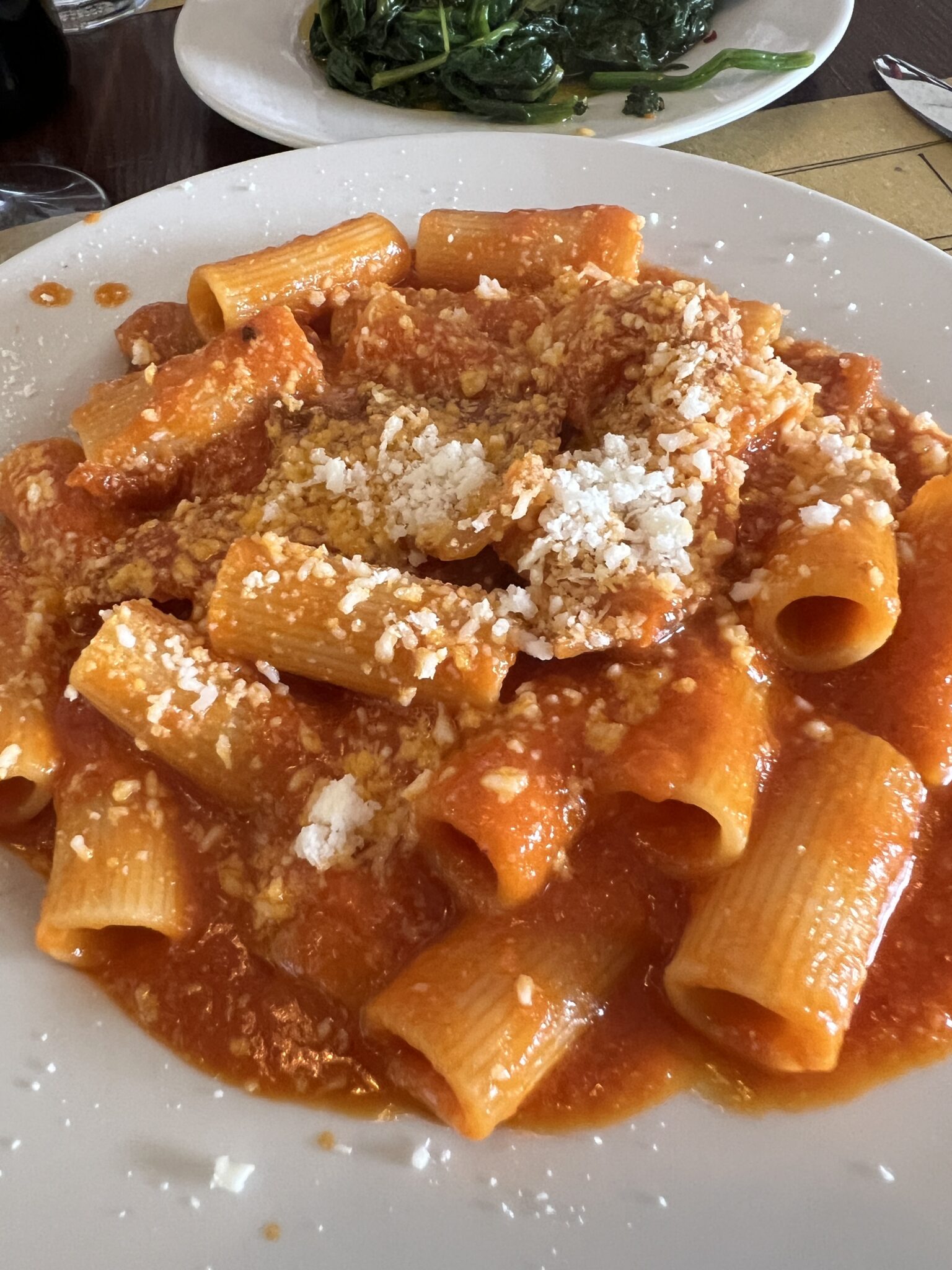
First hint that not all is right… look at that nasty watery edge to the “sauce”. Grrrr. An insult to all our ancestors.
Other things on the table were pretty good, though the waitress screwed up the order of delivery. All in all not a good performance for the place.
Out the door of Santa Maria sopra Minerva.
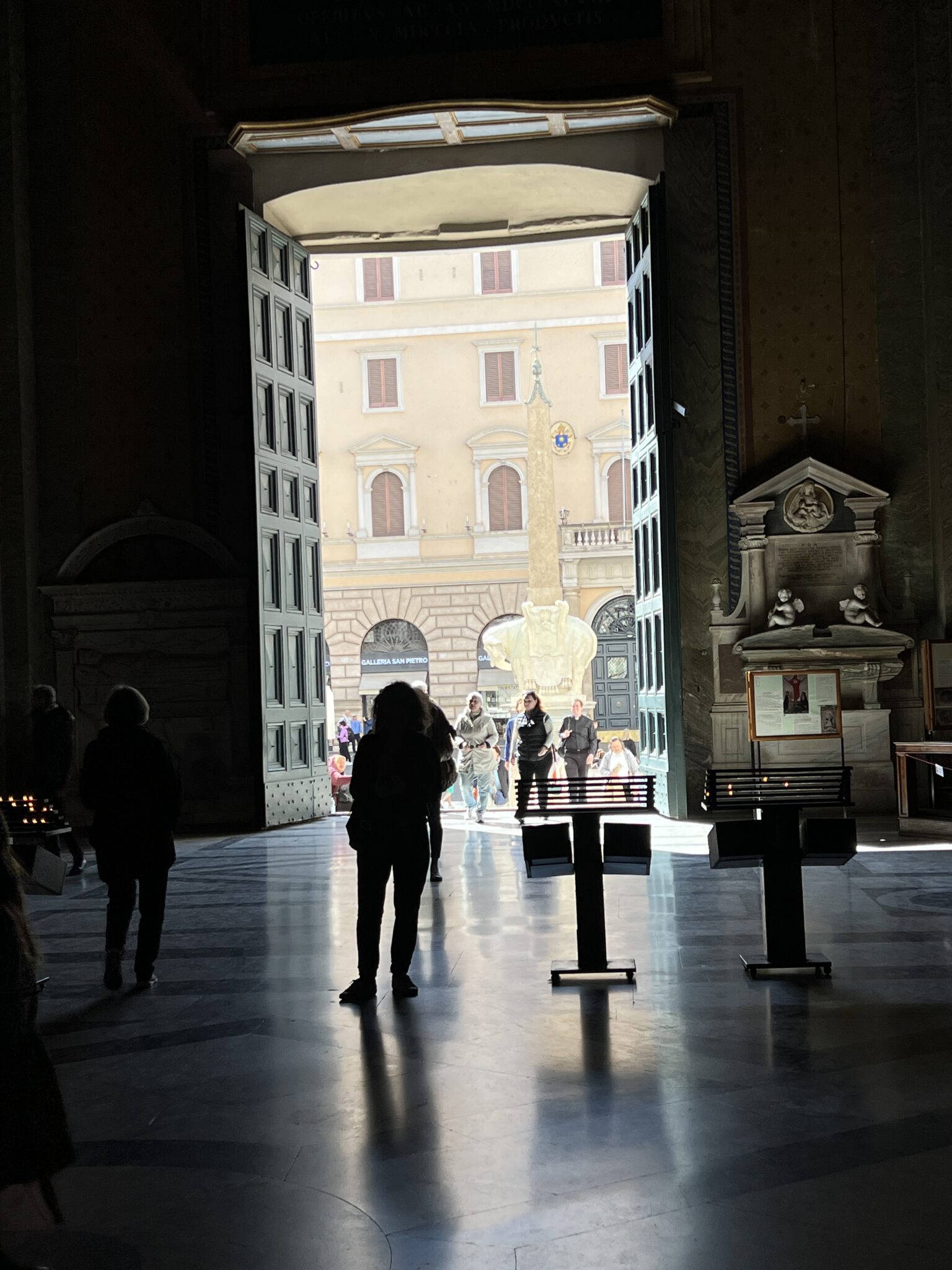
I understand that the great hotel across the way has been purchased by the new Orient Express company. It is being completely renovated.
The crowds here are massive. Not a surprise for Easter season.
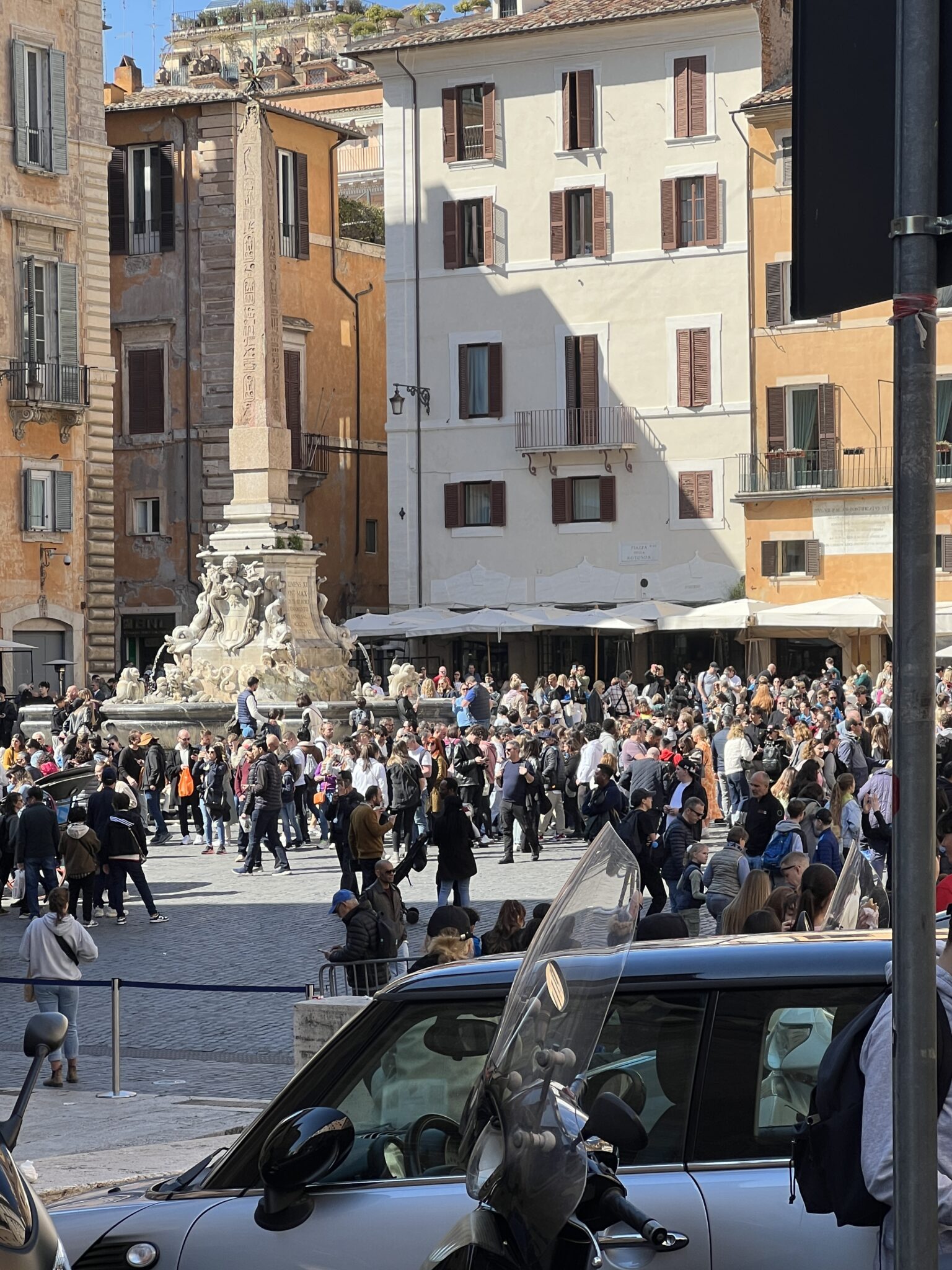
Yesterday we had the Mass of the Last Supper and then Tenebrae.
The necessities are readied for the Mandatum with members of the Archconfraternity in the sacristy. Note the small bag. Inside are 12 coins, one of them different from the others. When each man has had his feet washed, he takes out a coin. The one who draws the odd one is thereafter “Judas” for the rest of the year.
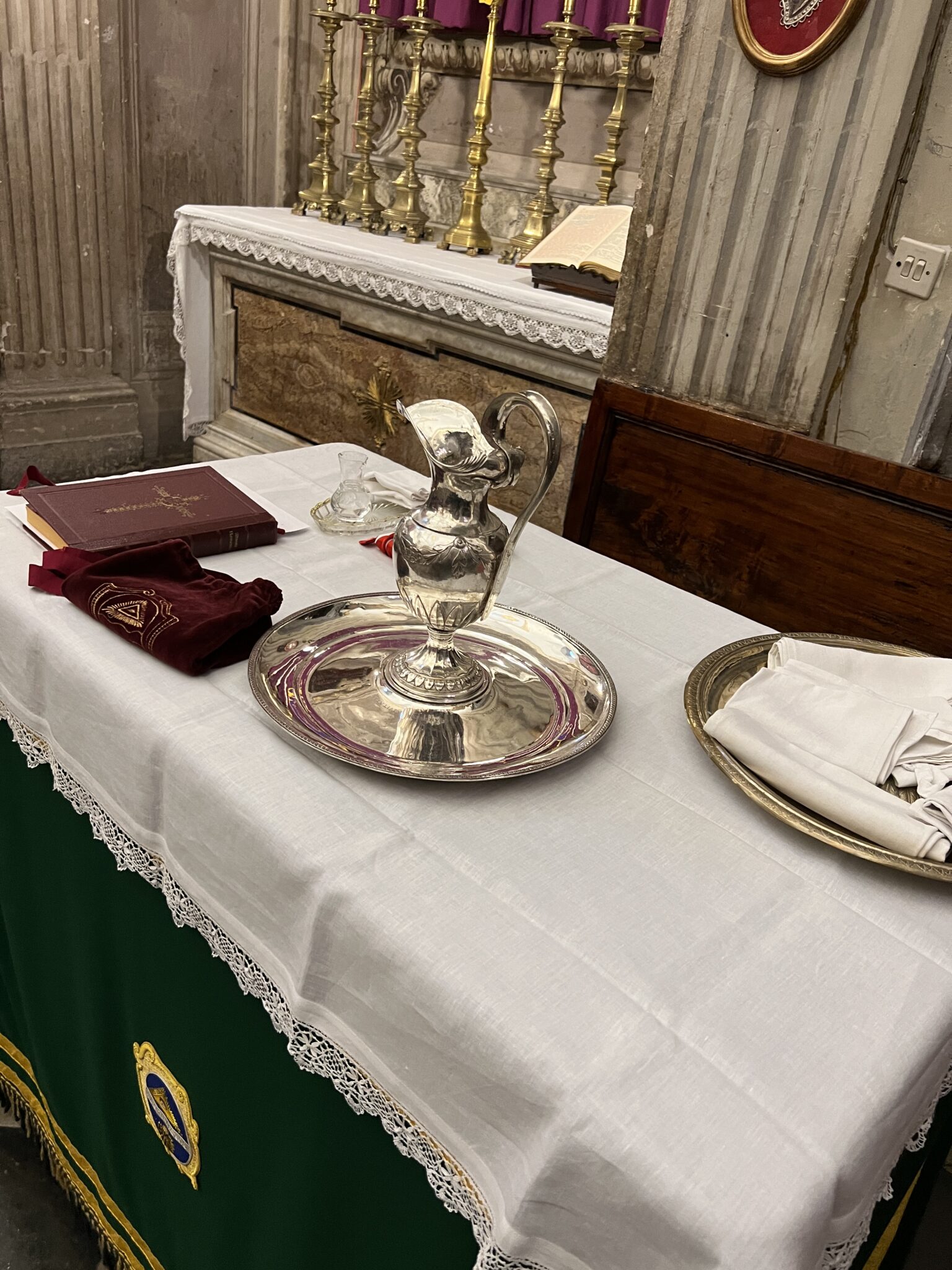
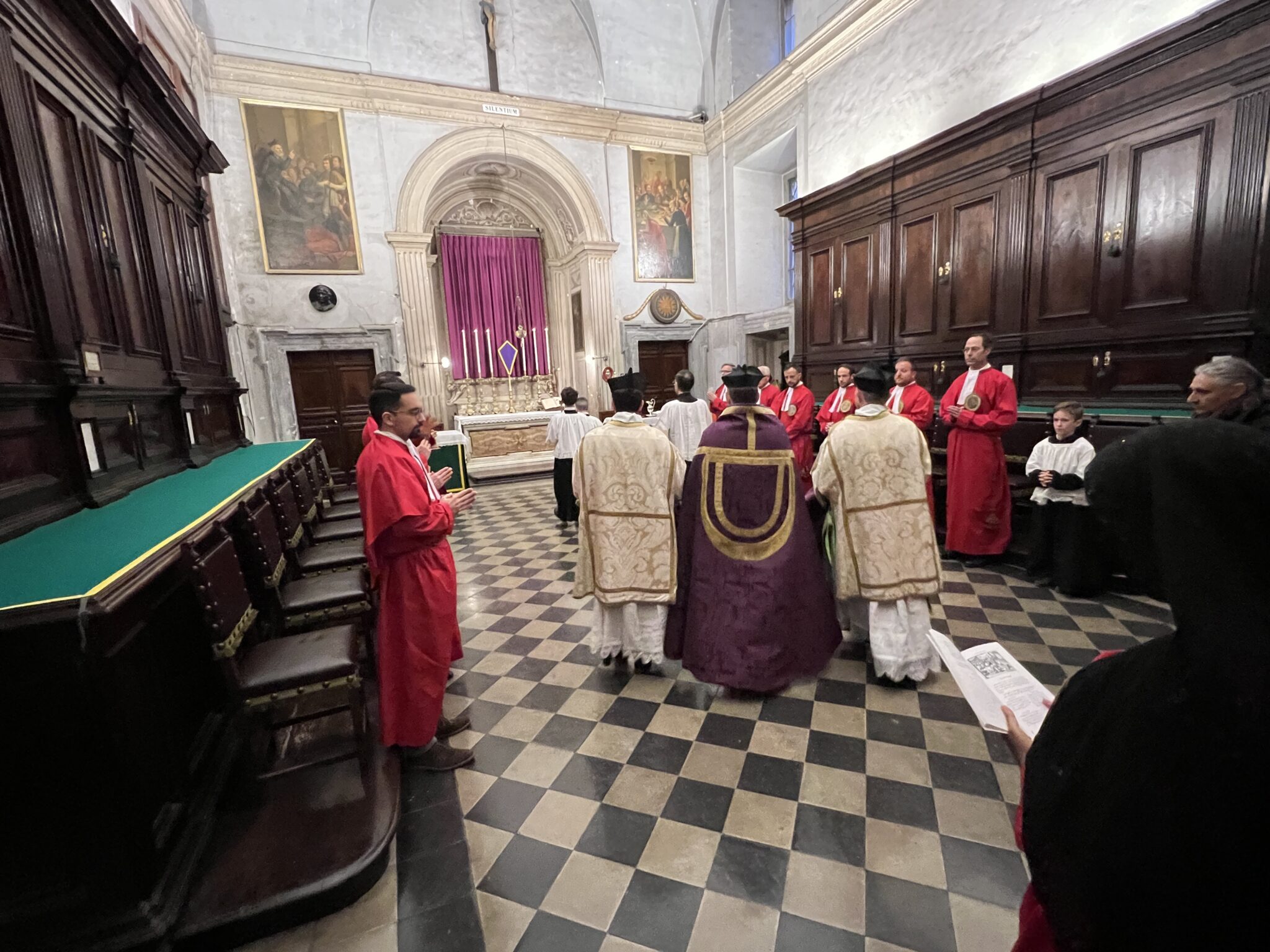
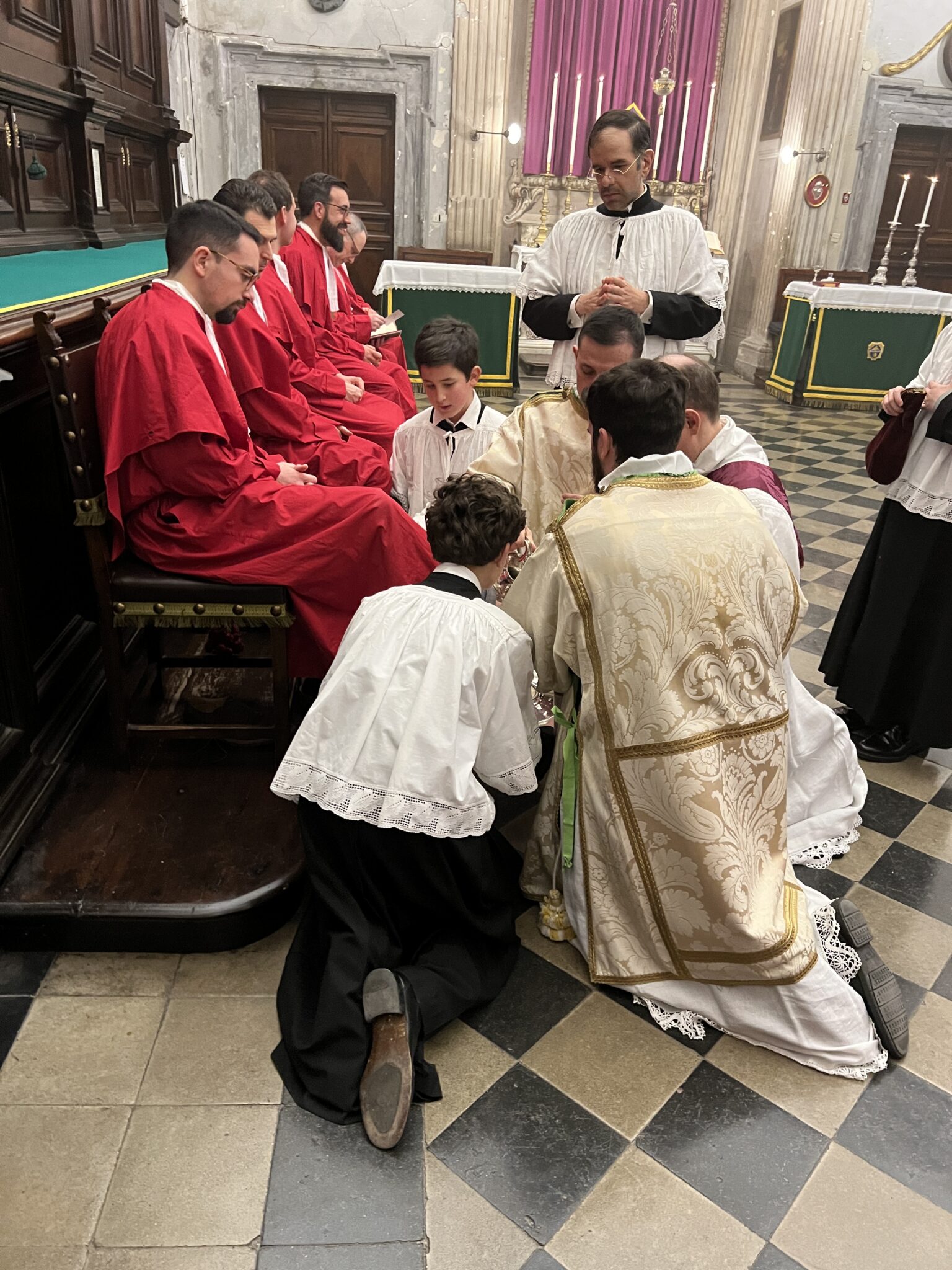
The guys are getting the canopy ready for later.
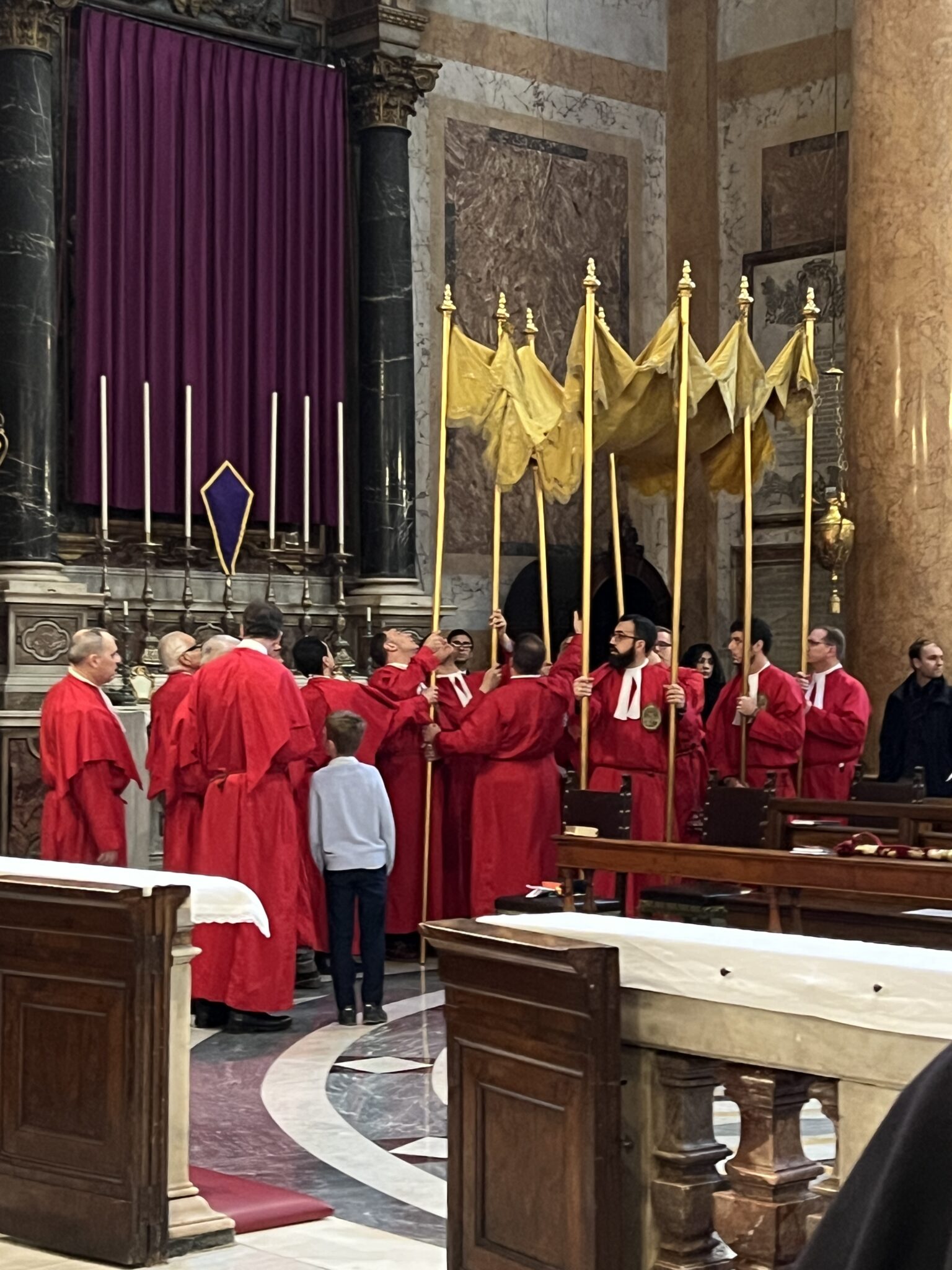
Behold of the use of the housling cloth for Communion.
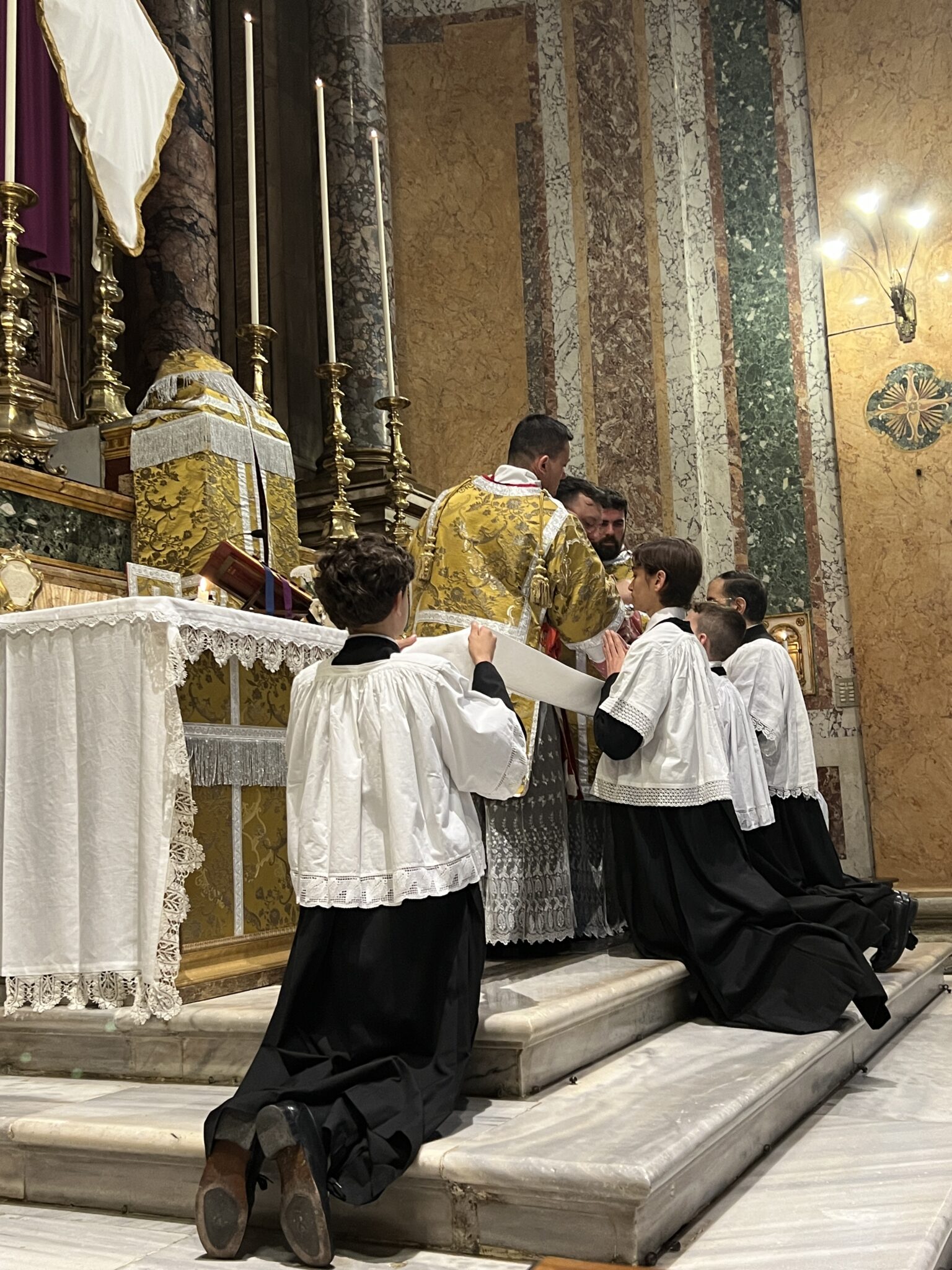
The sacred ministers participate in the stripping of the altar.
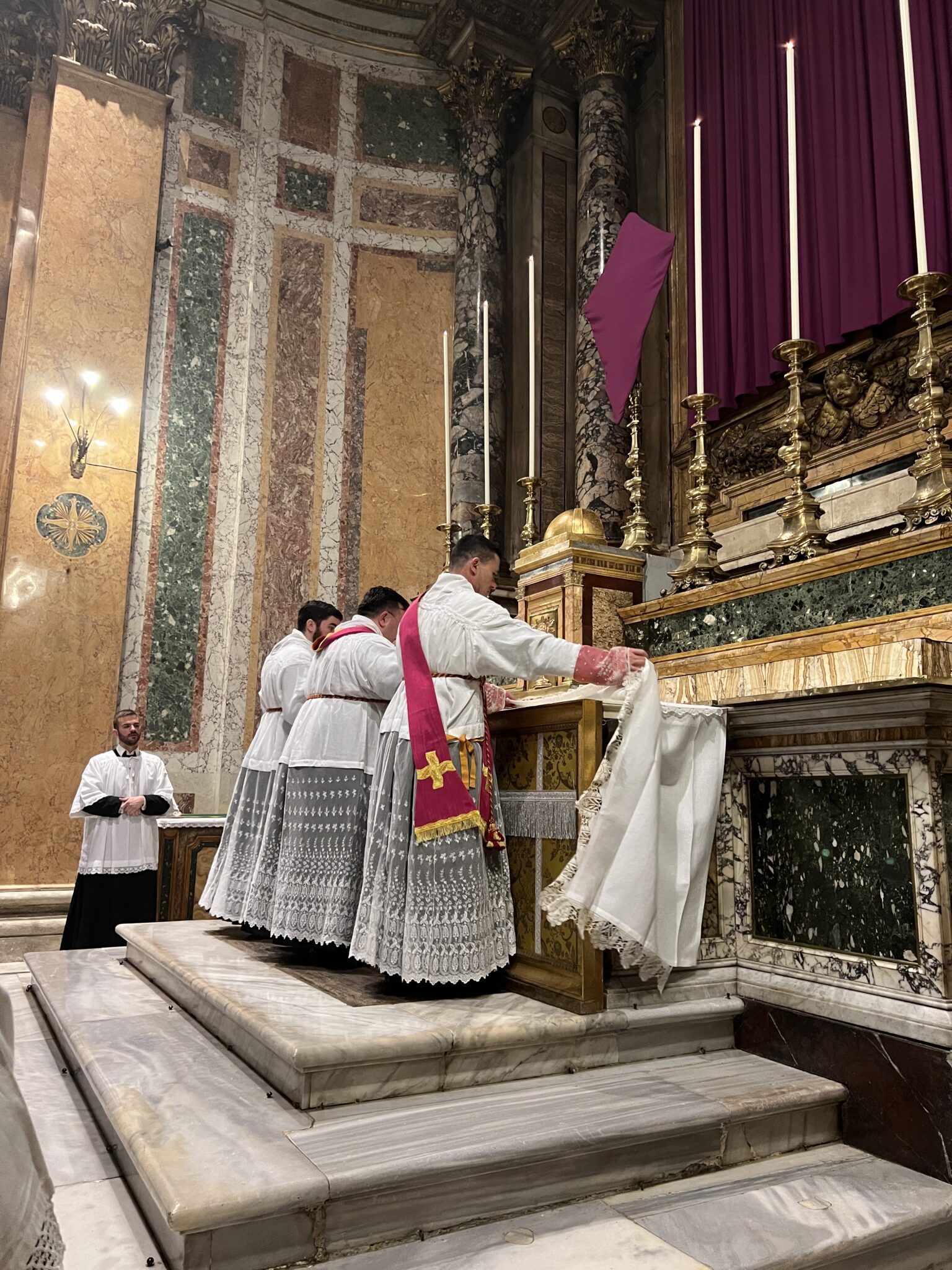
If you were wondering, the church was jammed. 45 minutes beforehand people were in the street outside.
Tenebrae was sung after the sacred action. Here is the undersigned signing the 7th Lesson.
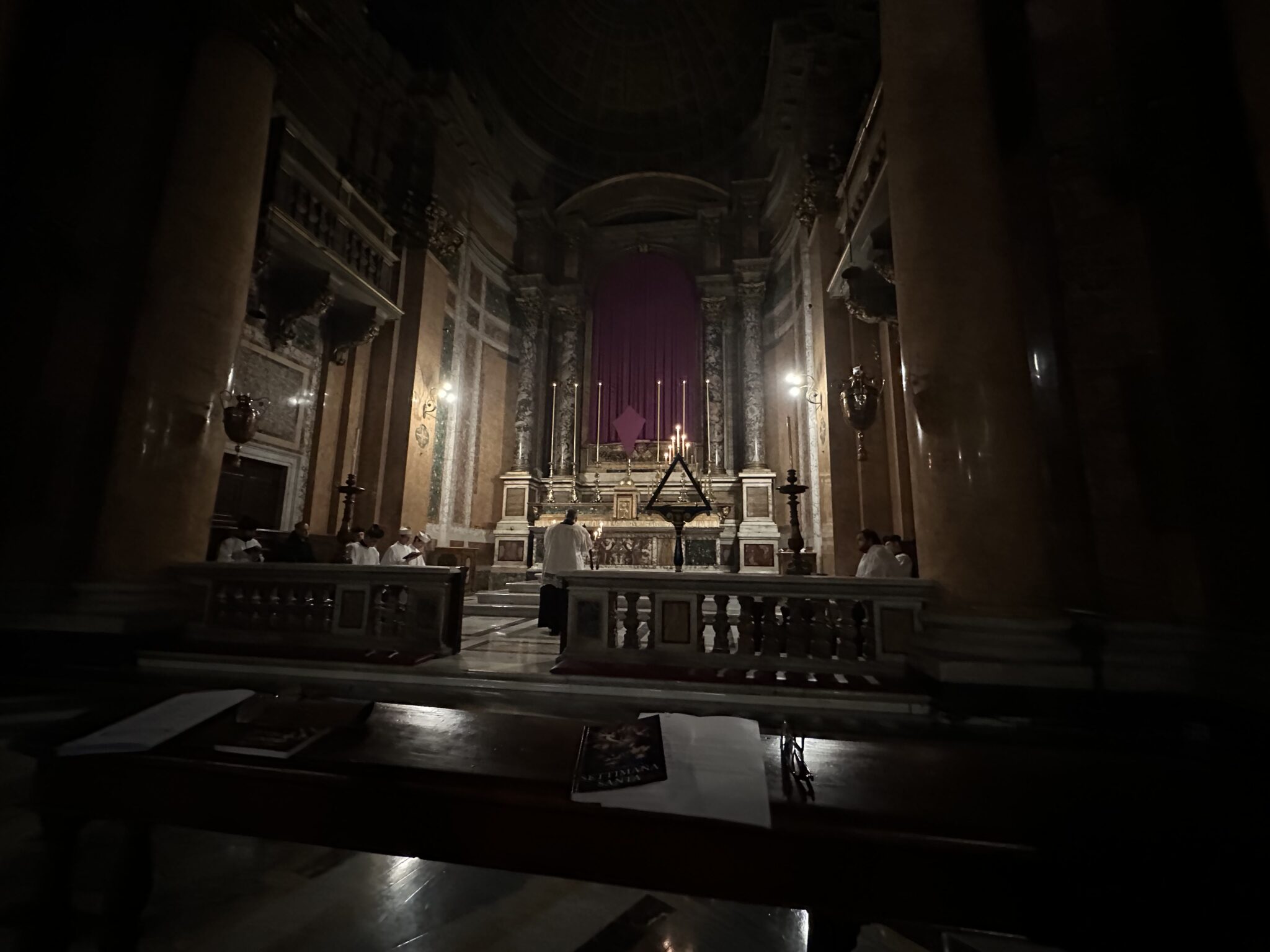
Tenebrae has been great. I first sang Tenebrae in, I think, 1981. They are using here some polyphonic responsories, which I don’t care for. The Gregorian chant responsories are by far superior in their expression of the texts. They are, frankly, among the most beautiful chants of the year.
Meanwhile,
Black to move. Look at that passer. How to bring white down without losing your threats and leaving white in a better position?
NB: I’ll hold comments with solutions ’till the next day so there won’t be “spoilers” for others.
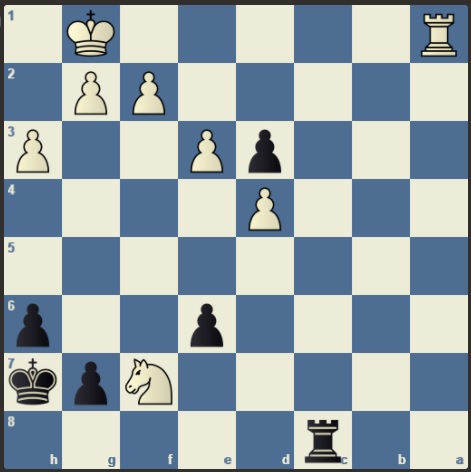
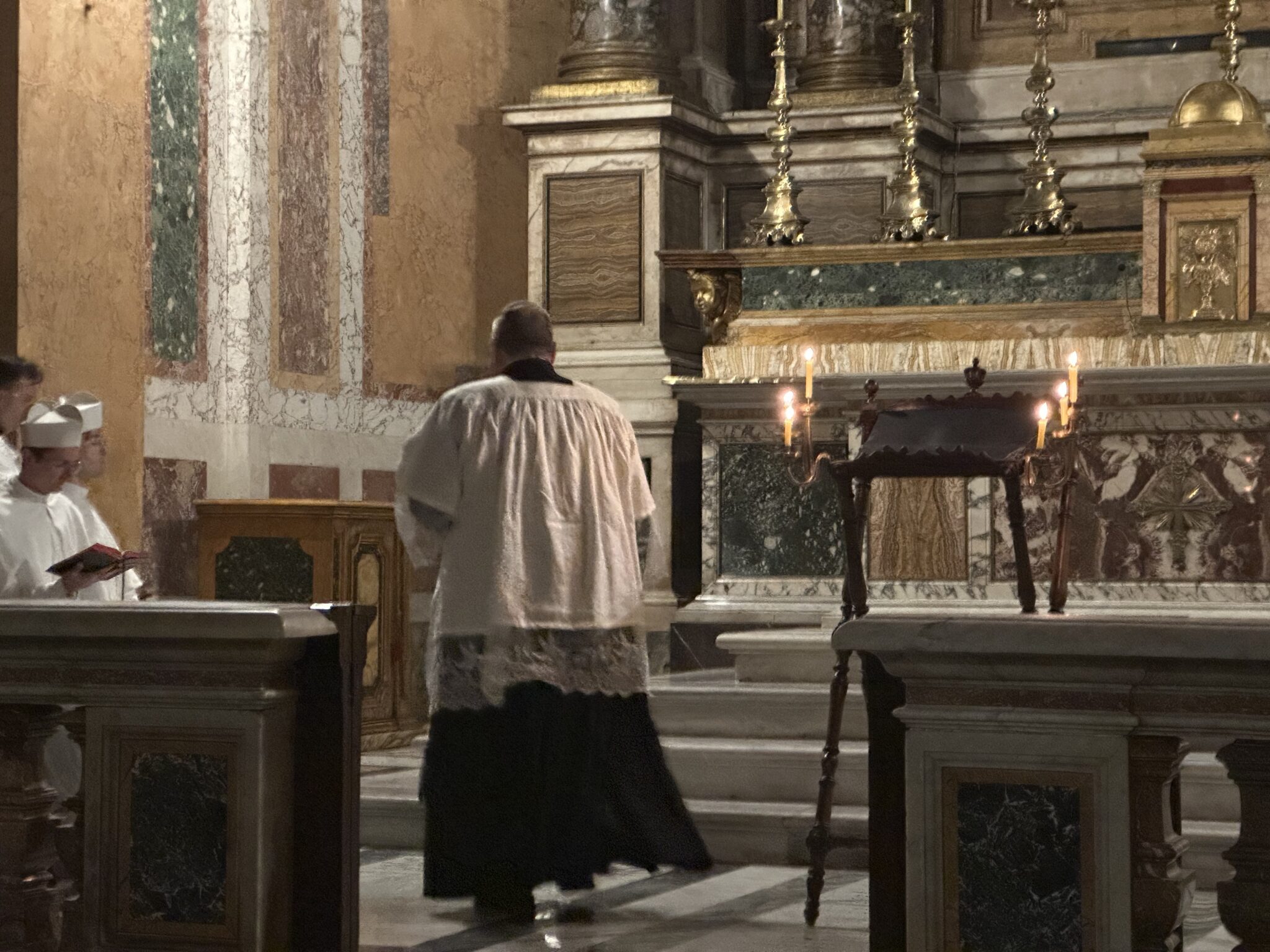
Action shot.

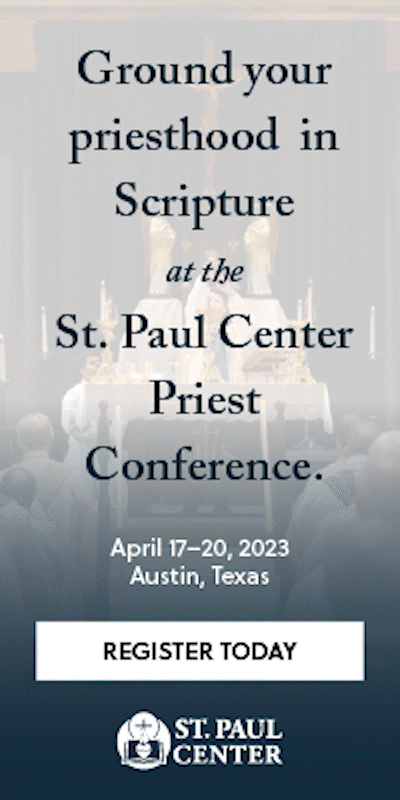


































1. . . . d2
2. . . . Rc1+ (White could do Ng5+ but that would be countered with Kg6, only delaying the inevitable)
3. Rxc1 xc1=Q+.
Beautiful pictures. I am curious. What is required of the member in the role of “Judas” for the rest of the year? [A sense of humor.]
Wishing you a blessed Triduum and Easter.
1. … d2
If
2. Rf1 Rc1
3. Rxc1 bxc1=Q+
If
2. Rd1 Rc1
3. Rxc1 bxc1=Q+
Regarding the Mandatum, I’ve often wondered how it wasn’t theologized into a sacrament in the early church. Surely it’s a vivid a) outward sign which was b) instituted by Christ. Did people not think it c) conferred grace? I think I’ve asked this before on your blog and your answer had to do with form and matter. I realize this an incredibly busy time for you but perhaps someday you’ll do an essay on that. I’d be very interested.
Post: Okay, let’s consider the first part. The Church didn’t see this as a Sacrament.. with a big S. It is a sacrament, of sorts, with a small s, I suppose. However, the Church in perennial – nay, centennial and millennial – reflection, being the only institution that could possible have the authority from Apostolic Tradition to see it as a Sacrament… didn’t.
Sacraments have matter and form… sure. But they are outward signs of interior realities.
Turn the sock inside out, so to speak… an appropriate image for the question.
What sacramental grace would it confer? What would it be for? What would be the purpose?
Perhaps a better way to see the Mandatum is to look at Augustine’s profound, perhaps the best, explanation in his Tractates on the Gospel of John, wherein Augustine interprets the washing of feet through the lens of the Song of Songs.
Thank you very much for taking time to answer that on Easter. I am sure you’re quite busy. I’ll look up the St. Augustine reference you provided.
The ritual seems to be about cultivating an interior humility, a chief goal of Franciscan (no not that one) spirituality.
Footwashing was more a thing in medieval times than in early Christian times, as far as I can tell. And it was mostly about abbots and abbesses washing feet of monks or nuns, or lords and ladies washing feet of their subordinates, or of beggars.
I think footwashing impresses people more as a symbol when more people wear shoes, that’s all I’m saying.
That said… there are Japanese bath hotels and spas where they still give you a footbath as a welcoming ritual, once you’ve come in. Sometimes they just have you plop your feet into the footbath, while other times they really wash and massage your feet. In the days when people had to travel on foot to the mountain hot springs, hotel guests really needed the footbath.